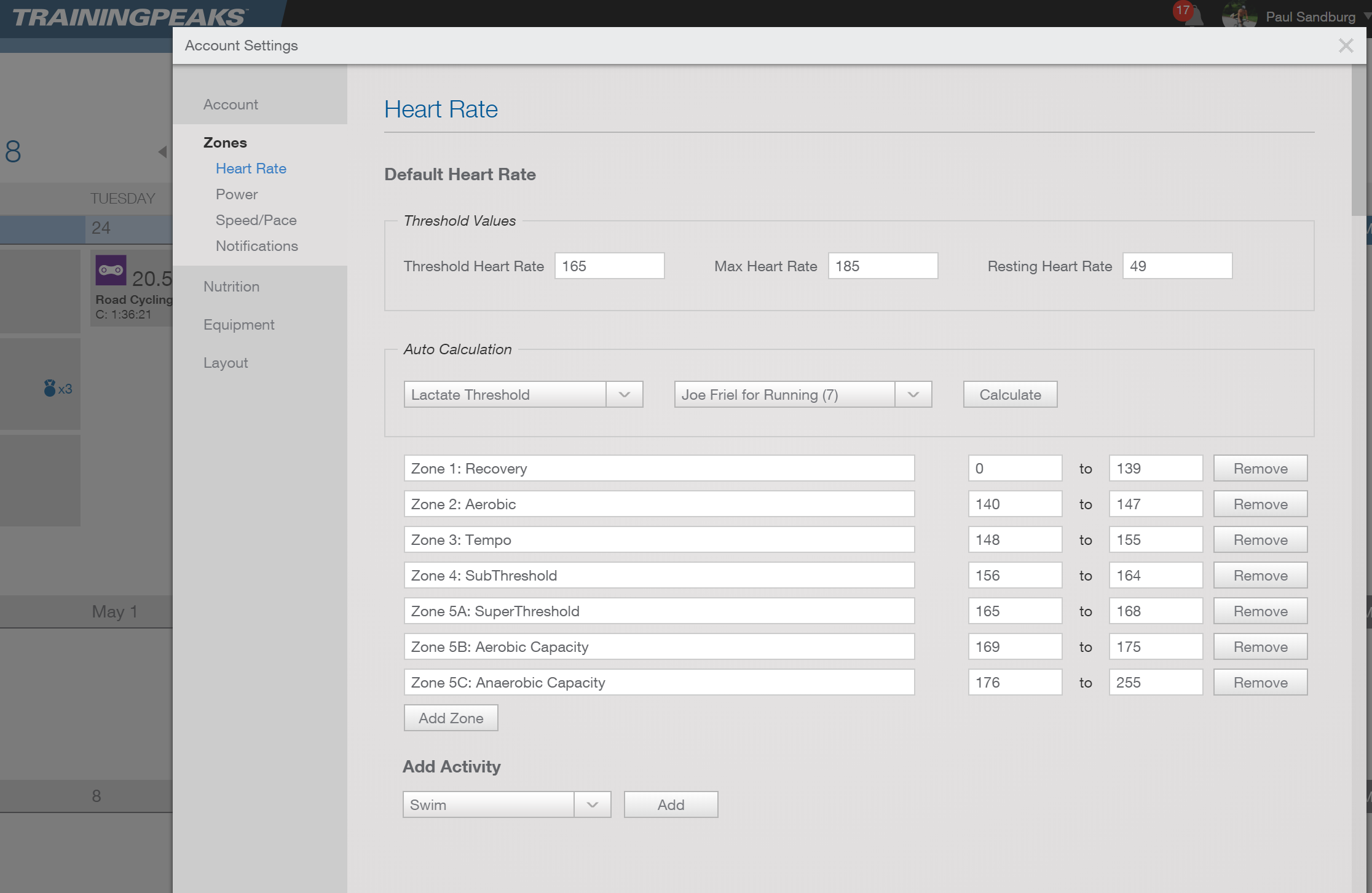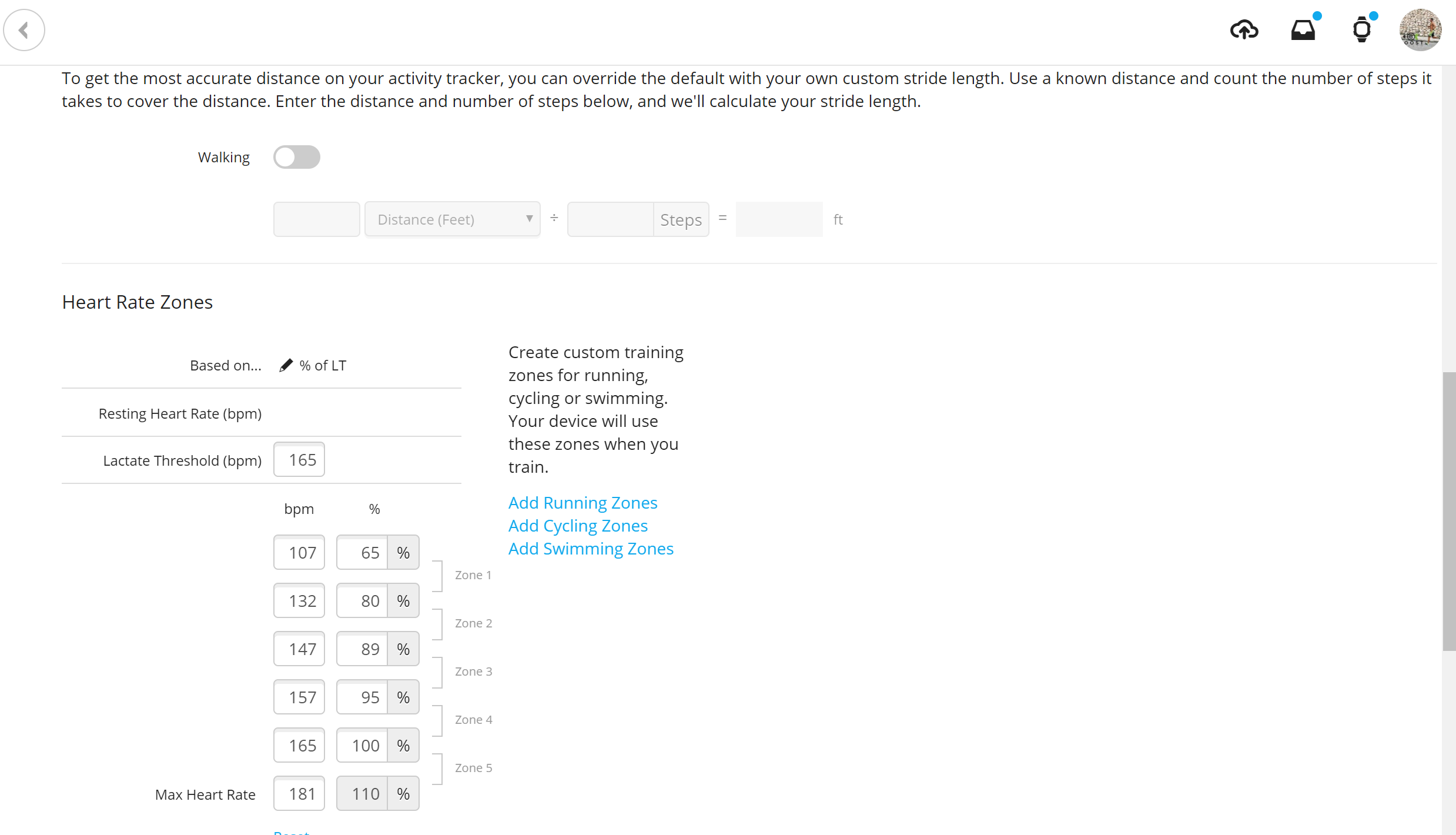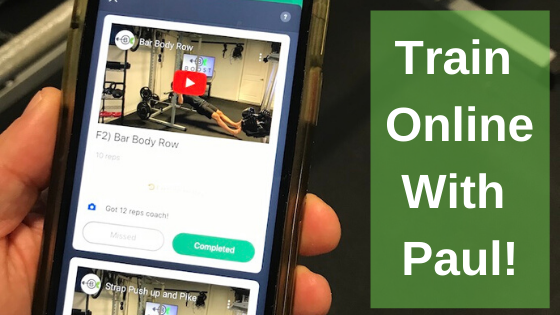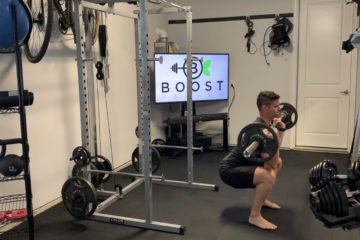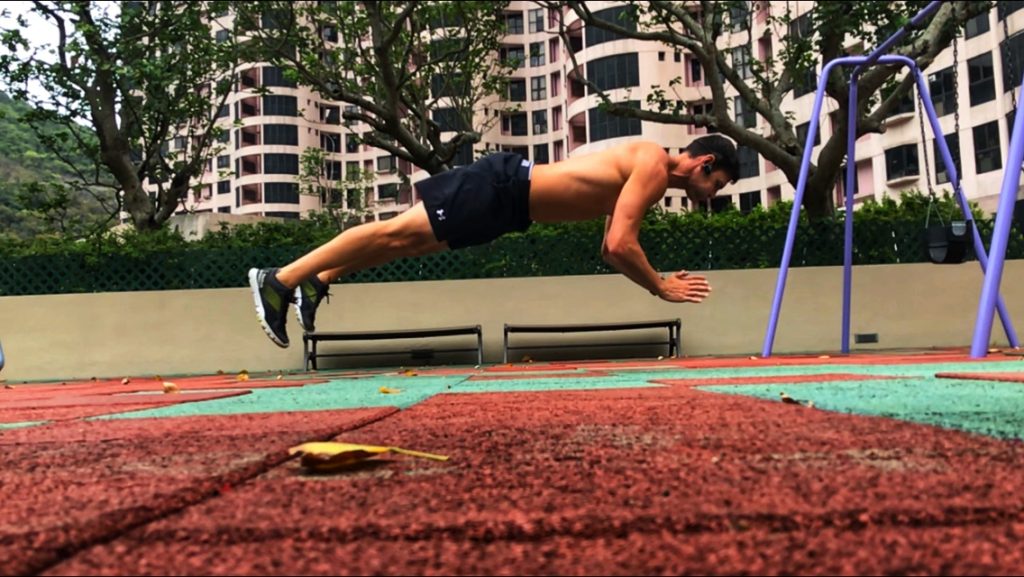
It is difficult, but I have decided I don’t want to be so special. I want to be more generalized. I don’t want to be a triathlete, playground gymnast, cyclist, cross-fitter, obstacle course dude, yogi, or gym rat. I think I will just dabble a little in each. What do I mean?
I mean I don’t want to just be able to run fast in a straight line, but instead be able cut at a hard angle, explosively jump over a fallen tree, or run barefoot in deep sand without batting an eye.
I mean I don’t want to be too tired from training, but instead be a fun dad and chase after my kids on the playground, and run, jump, swing, and climb with them.
I mean I don’t want to sacrifice endurance for strength, but instead be able to hold a good pace on a run or a bike climb but also be able to do 12-15 full range of motion pullups, explosive full body press ups, and back squat a lot of weight.
I mean that I don’t want to be a sleep deprived, over trained, stress hormone maxed, chronic fatigued mess, but instead have high levels of testosterone, balanced training, enough sleep, and enough specific recovery to allow my body to absorb my training.
I mean that I don’t want my back to hurt when standing or sitting at my desk, or waiting in line at the grocery store, but instead be able to have the awareness and core strength to brace myself properly with good posture.
What I really mean is that I want to be on the best fitness program for overall health and performance. I want to be able to enjoy a big bike ride with my buddies and hang in there with them, but don’t need to cycle 7 times per week to be the best. I want to be able to squat heavy weight in the gym and be able to run track later that night without feeling destroyed. I want to go to the playground and do pullups on the monkey bars and also be able to swim a few laps without feeling spent. I want to have the strength to carry heavy grocery bags or fire wood effortlessly and have vice grip forearm strength. I want to wake up for an early workout but feel rested and have a good heart rate variability score. So what program would create this balanced specimen? After must research, and many years personally experimenting in the field, I have identified what I think are the 5 most important elements for the best overall fitness program.
1. Full Body Strength Training
Those who know me, are already aware that my first love of fitness is strength training. It all started when I was a kid experimenting with my dad’s old barbell weight set in the garage. It was fully realized later, before my freshman year of high school, in the summer strength training program for football. From then on, from high school, through university, and into current times, strength training has been a constant for me. I have been lucky to have good mentors, coaches, and the best professional training available, to learn proper techniques and pass them on to my students. I love the way it makes me feel strong, powerful, and muscular. Strength training is definitely part of me and I would even go as far as to say it defines me (pun intended). But maybe strength training is new for you, or you have tried it a few times but it hasn’t become ingrained into your routine.
Below are some of the many benefits of strength training that I hope will sell you on adding it to your program:
• Increases your metabolic rate/Burn calories more efficiently
• Evidence of help in managing chronic conditions such as diabetes, back pain, arthritis, obesity, heart disease, and depression
• Prevents osteoporosis
• Reduces body fat
• Increases strength
• Prevents muscle loss (occurs naturally with age)
Now that you are sold on adding it to your routine, we need to cover the type strength training that is best and how often you should do it. I did an entire show and blog on benefits of full body training which you can check out here. The basic take away is that full body strength training is best no matter what your goals are. Full body training is where you train your entire body in 1 workout and focus of lots of big compound movements like squat presses and pullups. Don’t do split programs where you focus only on 1 or 2 body parts. We, as humans, respond best to training our body as 1 big kinetic chain. There is a lot more functional application to a deadlift with a barbell then a bicep curl machine for example.
The full body strength program should be done 3 days per week and not in consecutive days. Mondays, Wednesdays, and Fridays each week works quite nicely. A 2009 study in Phys Sportsmed by Wescott et al, found that doing aerobic exercise and strength training both 3 times per week yielded greater improvements in body fat percent, fat weight, and lean weight, than only doing them 1 or 2 times per week.
Don’t belong to a gym? Don’t have much space? Don’t have very much time? No problem! I have created a full body workout you can do at home that only requires your body weight and dumbbells. Here is a video of the workout.
I also created another full body workout you can do at home, or even when traveling, that only requires your body weight and resistance bands. Here is a video of that workout. These workouts take less than 30 minutes to complete. No excuses now right?
Sometimes I hear from my endurance buddies that they don’t need to do strength training, especially strength training for their legs, because they do running and/or cycling and that should be enough. Firstly, in the instance of folks who only cycle, there is no load bearing exercise happening and thus there is no maintaining or improving of bone density which is one of the aforementioned benefits of strength training. Runners get the load bearing movement with body weight and ground impact but the quality and speed isn’t always great. Think of all the thousands of repetitions of explosive ground striking that a runner does. Adding some high quality full body strength work, such as squat presses, will help the athlete strengthen the body as a whole which is best for functional application in sport and life. According to a 2017 study in Physiological Reports by Vikmoen et al, adding strength training to normal endurance training for experienced female duathletes improved both their running and cycling performance. Usually when you talk about improved performance it will make the athlete perk up their ears. Another study, published in Medicine and Science in Sport and Exercise in 2008 by Storen et al, found that strength training improved force development by 26%, max aerobic speed by 21.3%, and running economy by 5% in a group of well-trained distance runners.
It will also help make the body more durable. If the runner has muscle imbalances, for example, these are hard to treat with more running. So if you value performing at an optimal level, and want to squeeze as many years of running, cycling, etc. out of your body as possible, then please add full body strength training to your regimen.
2. Cardio – Train Your Zones
Aerobic conditioning for me, up until I started multisport racing few years ago, had always been generated from sport like soccer, basketball, racquetball, football, etc. Sports are great for cardio training as long as you are consistent and the quality of work is high. I have worn fitness trackers with heart rate monitors in recreational soccer and basketball games and was surprised with the overall estimated caloric burn being around 1000 calories. Also the interval training was natural and effective with the occasional sprints down the field or court paired with recovery. Keep in mind I was putting in quality efforts and working hard in these sports. If I standing still posting up in the paint or not running back to get on defense then I wouldn’t have burned so many calories or had the same interval training effect.
After having kids I found it harder to jump into the evening basketball pickup game or play in soccer leagues. Multisport racing seemed interesting because I could train on my own when I had time but could still feed my competitive side in occasional races.for a few years now and have been improving each year as I slowly begin to master the skills of the different disciplines. Those who know me understand that I have more a minimalist approach to cardio training where I like mix in high intensity interval training (HIIT) to get a bit more mitochondrial bang for my workout buck versus all slow zone 2 stuff.
If you are new to cardio training then you may be a little lost on what is meant by zone 2 and interval training. Let’s dig into that. Firstly, heart rate is the most critical metric with cardio training. If you are serious about your all around fitness then you need a heart rate monitor. I like the TickerX by Wahoo as it can connect to Ant+ and Bluetooth so it can connect to your GPS watch or smartphone with ease. Here is a link to it on Amazon if you are interested:
The basic concept of heart rate zone training is that you operate in different energy systems in each zone and so working in a variety of zones can maximize overall health benefits. Everyone has different heart rate zones based on their age, and in more sophisticated formulas, fitness level. The most simple, but not always accurate method, is age predicted max heart rate. In this method you use the formula of 220 minus your age to get your maximum heart rate (MHR). This is measured in beats per minute (BPM). Then the training zones would simply be percentages of your MHR, where zone 1 equals 65-80%, zone 2 equals 80-89%, zone 3 equals 89-95%, zone 4 equals 95-100%, and zone 5 equals 100-110%. If you used me for an example with my age of 39, then 220 minus 39 is equal to a MHR of 181. Since zone 2 is 80-89% of my MHR of 181 then my zone 2 would be 145-161 BPM for example.
A more accurate way to find your training zones is to use lactate threshold. According to Joe Friel on the Training Peaks website you can easily find your running lactate threshold by completing and individual time trial. For running lactate threshold you would run as hard as you can for 30 minutes holding a steady pace. To ensure accuracy you would look at your average heart rate over the last 20 minutes as most folks tend to go out to fast in the first 10 minutes.
I have done this and found that my running lactate threshold is 165 BPM. This is valuable knowledge because if I am trying to hold a fast but steady pace out on training run or in a race and I see my heart rate above this number I know I need to slow it down so I don’t blow up. Once you have your lactate threshold data point then you can easily plug it in to a formula used on Garmin Connect, Training Peaks, or many others. Below are screenshots of my zones based on lactate threshold. Using my zone 2 example again you can see the lactate threshold has me at a range of 132-147 BPM which is far different than 145-161 BPM using the age predicted model. It is well worth spending the 30 minutes to do your own time trial and also do this several times a year, especially if you have major changes in fitness.
An excellent article on the University of New Mexico website by Dr. Len Kravitz of the University of New Mexico and Dr. Micah Zuhl of Central Michigan University delves into the research on HIIT and continuous endurance and found that HIIT produces results that are the same, or better in some cases, for various physiological markers. They recommend a combination of HIIT training with continuous endurance to get the most out of your training. This was welcome news to someone like me who finds the slow and low training a bit boring.
That helps us set up some training principles around cardio. We know we need to do some slow stuff and some fast intervals. This can be easily added to any cardio training discipline. Also we know, based on the aforementioned study, that 3 days per week of cardio plus 3 days per week of strength training yields good results for body composition. I really feel strongly that people should do some form of exercise every day (hint for another tip). Considering this, and what we know about HIIT, you could do 4 days of cardio and 3 days of strength training and alternate each day. For example in 1 week you could do 4 different cardio workouts where you did a mix of 2 slower efforts and 2 intense interval efforts. In this scenario you could do a slow zone 2 run once per week, a track running workout once per week with intense interval sprints and recovery after each, an easy zone 2 bike ride, and a bike ride with big hill intervals where efforts are put in on the climbs and allow the heart rate to recover at the top and descent. This is just one example of many possibilities.
3. Proper Warm Up
Most training program models include “flexibility” but I am not including it here. One of the reasons is because some research is showing us that more flexibility isn’t necessarily going to be helpful for performance. For example, a 2011 study in the European Journal of Applied Physiology found that static stretching can cause performance impairments. Most of the time the performance issues occur when static stretching is done before a workout or sporting event. I did an entire blog post and podcast on benefits of dynamic warm up pre workout and how static stretching should only be done post workout. I also provide a video of a proper dynamic warm up. You can read that post here, listen to that episode here, and watch the video here.
Static stretching, such as with Yoga should be fine, but if you are doing this on same day as sport or strength training, do a few hours beforehand or just wait until after. I am also purposefully not mentioning cool down as part of this program. There is tons of conflicting research on whether or not cooling down has any benefit. Most studies agree that taking a few minutes to do some focused breathing and static stretching is not going to do any harm though.
4. Consistency
Exercise every day. Based on what we know from research, 4 days of cardio and 3 days of strength training would be a nice breakdown for your 7 day week. If you are tired, maybe it can be an active recovery day like an easy walk or light strength session. The key is to just get in the habit of doing something each and every day. I know, I know. You are busy. The kids’ activities, demanding job, business travel, etc. all make squeezing in exercise a challenge. Most of the time the best response to those hurdles is to just get your exercise in early. I talk about being an early bird in my blog and podcast titled “10 Tips for the Best Morning Routine for Health and Productivity”. Please don’t fall into the trap of saying you are “not a morning person”. Everyone can be a morning person. It is just a matter of resetting your clock, and maybe your mental wiring.
Taking a look at my schedule as an example, we cycle here in Hong Kong very early to beat the traffic for safety and enjoyment purposes. We have our wheels rolling during the work week at 5:15am. For me, this means getting up at 4:15am. On other days I teach 6am group fitness classes. In order to get my own workout in, and back in time to teach, I have to start by a little before 5am. Again this means rising up with a number that starts with a “4”. If I told you I was super excited to get up that early I would be a liar. But I feel absolutely amazing for the rest of the day and the workout is complete. It isn’t hanging over my head as an uncompleted task that I feel guilty about, but rather is starting off my day with a productive, health inducing, energizing activity. Also it is not difficult to go to bed early when you woke up at 4:15am earlier that day, believe me! Your body will quickly adapt to the early rise/early fall cycle.
5. Lifestyle
This type of lifestyle is really just approaching everything with a healthy mindset. It is about asking yourself in all situations if you can make a healthier decision and then acting on it. Here are few ideas of simple small changes you can make each day that can add up for a big positive effect:
• If you are on an escalator, and there is room, go ahead and walk up or down the stairs.
• Don’t scan the parking lot for the closest space to the store. Go ahead and park far away and get a nice walk in.
• Set up your workstation so you can sit or stand throughout the day. Sitting or standing for too long is hard on the body. It doesn’t have to be a fancy or expensive setup. Here are a couple of examples of me using chairs, old boxes, and suitcases to elevate my keyboard, mouse, and monitor.

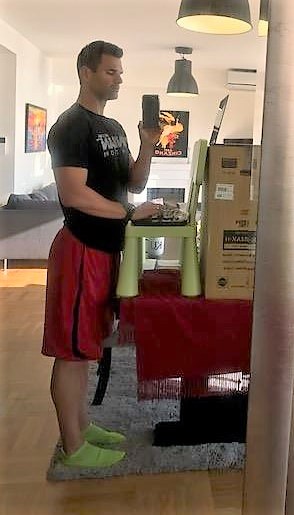
• Exercise while on vacation or traveling for work. Don’t let travel throw you off your schedule.
• Carry as many grocery bags as you can and walk with good posture and a tight core.
• Keep up with your kids (if applicable). Run, jump, walk, climb, squat, and crawl with them.
• Tell friends, family, colleagues, and the bank teller, about your workout planned for tomorrow. It will add accountability.
To help get you started in using the 5 elements of full body strength training, cardio training with zones, proper warm up, consistency, and lifestyle I have written 2 sample programs. I hope you will consider these elements when tailoring your own program and I wish you great success in finding your balance.
Example Program 1 – Daily Workout
Dynamic warm up before each workout
Monday – Strength training
Tuesday – HIIT run
Wednesday – Strength training
Thursday – HIIT cycling
Friday – Strength training
Saturday – Easy run
Sunday – HIIT swim
Example Program 2 – Advanced
Dynamic warm up before each workout
Monday – Slow run and strength training
Tuesday – HIIT cycling and easy swim
Wednesday – Strength training and HIIT running
Thursday – HIIT cycling
Friday – Strength training and HIIT swim
Saturday – Easy cycling
Sunday – Threshold run
If you have applied these 5 elements to your personal workout regimen and have had success I would love to hear about it! Please comment below to share your tale.
Podcast: Play in new window | Download
Subscribe Apple Podcasts | Google Podcasts | RSS
